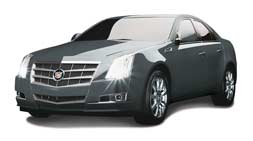I have been researching my next Cadillac purchase. I was split between a 2007 Cadillac CTS-V or a 2008/2009 Cadillac STS-V. Either car would be really interesting to me for the next 5 years, but I am starting to lean toward the STS-V. So now it becomes an issue of finding the right car, at the right price. Also I really need to go drive a 07 CTS-V and the 08 STS-V just to make sure there are no details that have escaped me. I like the manual transmission in the CTS-V (my Wife would not), but the luxury features of the STS-V fit my concept of an ultimate Cadillac better.
I have a wide span of time that I can shop. My 2005 Cadillac CTS is doing very well, and is under extended warranty for more than another year. So my current car situation is stable.
The STS-V was made in limited quantities. The engines were actually made by hand, by a single technician on each engine. In 2008 around 458 STS-V’s were sold. That makes them a bit more difficult to find & buy than some other models made in higher numbers. On the bright side, with such a recent car lots of them are still on the road, and some are coming off lease, or their owners are trading in for newer cars now or will this summer.
In fact, prime V-shopping time may be this summer as the CTS Coupe and V-Coupe are released. I suspect a lot of V-owners will want to update to the V-Coupe when it is available. That will make a bit of a Buyer’s market for their current 1st Generation CTS-V or STS-Vs.
I would like to find a low mile STS-V at a very low price of course, but I am in the fortunate position to be able to wait for the prices to fall a bit until they reach my target range. My plan is to purchase the STS-V, then put my CTS up for private sale locally, with all the drama & irritation that includes.
It is a good time to shop with the internet available. I did learn a bit more about some oddities on eBay with bidding against a Reserve, and the ebay near-real time interface options. Getting some of those details down may be important in grabbing the right car at the right price.
It might be fun to purchase the STS-V remotely and drive it home for the first trip out of the box — just depends on where the ‘right’ Cadillac is that fits in my price range.
If you have a 2008 Cadillac STS-V that you want to sell (very inexpensively) please let me know! It will end up getting featured here on CaddyInfo quite a bit over the next 5 years.

